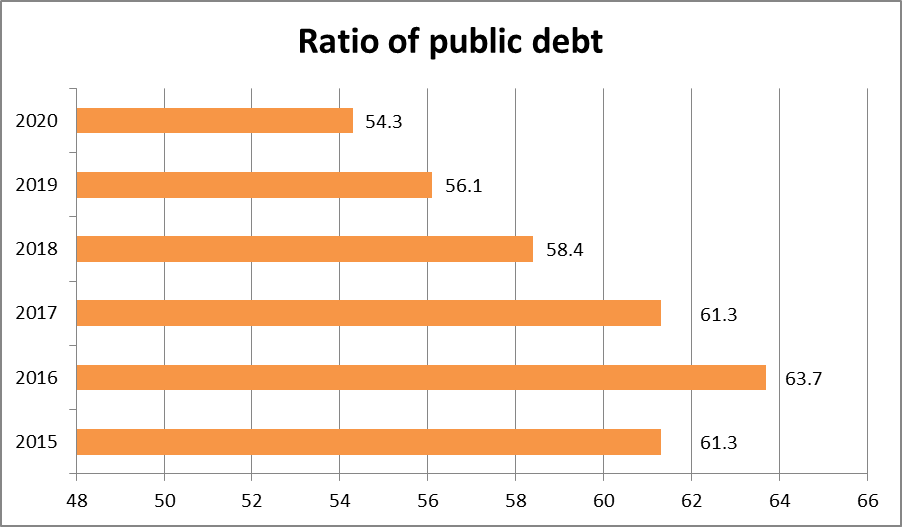 |
|
An urban railway project that taps official development assistance loans. Vietnam’s public debt is expected to make up 54.3% of the country’s GDP by end-2020
|
The ministry recently released a report on the State budget estimate for 2020, which the Government will submit to the legislative National Assembly for approval.
The ministry asserted that the 2020-2022 period will witness global economic uncertainties, where protectionism and trade tensions could further disrupt the world’s business and investment environments as well as trade activities.
In addition, political and ethnic conflicts and border disputes worldwide, among other issues, are expected to have an impact on Vietnam’s economic growth.
The three-year period also represents the transitional period from the five-year socioeconomic development plan and the five-year national financial plan for the 2016-2020 period to the corresponding ones of the 2021-2025 period, according to the ministry.
The ministry put the country’s GDP growth for the 2020-2022 period at an average 6.8%, while the inflation rate will be some 3%-3.5%. Also, the import and export rate will grow from 6.5% to 8% per year.
The ministry targets State budget revenue during the period of VND4.9 quadrillion (US$210.6 billion), with the average rate of capital mobilization projected at 21%-22% of the GDP and the rate of domestic revenue until 2022 accounting for 84%-85% of the GDP.
Meanwhile, the country’s State budget expenditure between 2020 and 2022 is forecast to hit VND5.7 quadrillion (US$244.9 billion), resulting in a fiscal deficit of 3.44% of the GDP in 2020 and 3.5% in 2021 and 2022.
The ministry also pointed out a number of major risks to Vietnam’s financial and budgetary plans in the 2020-2022 period.
Vietnam’s macroeconomic conditions have improved significantly, showing greater economic resilience.
However, development is not sustainable due to the high level of economic openness. The structures of overall investment capital and trade balance are highly dependent on the foreign direct investment (FDI) sector, particularly in a period of strong volatility in the global economic environment.
Moreover, the country faces a major challenge in maintaining high economic growth of some 6.8% per year.
In addition to risks concerning FDI attraction and exports, unfavorable factors include natural disasters and environmental pollution, coupled with changes in pricing management.
The ministry suggested risks to economic growth would create risks for the State budget revenue since more than 70% of the revenue comes from domestic tax collection and over 16% from crude oil and import and export tariffs.
The fiscal deficit could widen beyond the current estimate contingent on a reduced State budget revenue collection, natural disasters, epidemics, environmental pollution and so on, according to the ministry. SGT

Public debt continues with downward trend, Gov’t report shows
Vietnam’s public debt will fall to 56.1% of GDP by the end of 2019 from 58.4% last year, according to the Government’s latest report.

Vietnam’s government to pay US$16 billion in debts in 2020
The government has set targets for public debts, government debts and foreign debts to ensure they are within the limit and lower than the national financial plan in the 2016 – 2020 period.
 Vietnam’s public debt is projected to reach 54.3% of the country’s gross domestic product (GDP) by the end of 2020, before easing further to 53.3% in 2021 and 52.7% in 2022, according to the Ministry of Finance.
Vietnam’s public debt is projected to reach 54.3% of the country’s gross domestic product (GDP) by the end of 2020, before easing further to 53.3% in 2021 and 52.7% in 2022, according to the Ministry of Finance.